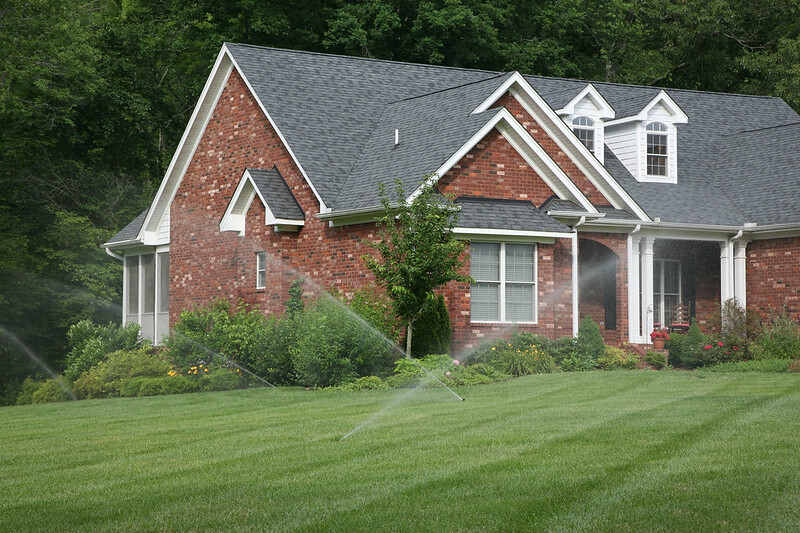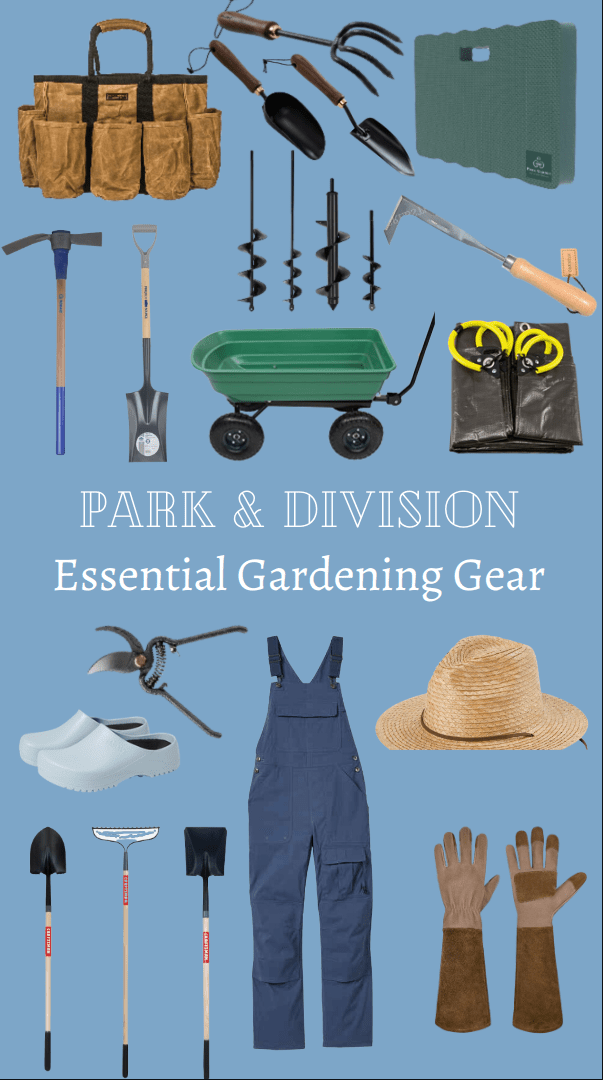In the pursuit of cultivating a lush, vibrant garden, mastering the essentials of lawn care is paramount. This article serves as a comprehensive guide for beginners, providing crucial insights into soil and grass types, alongside tailored strategies for effective watering, mowing, fertilizing, and controlling weeds and pests. With a focus on the importance of soil testing every three years to ascertain soil composition and pH levels, understanding the distinction between warm-season and cool-season grasses, and adopting best practices in watering, mowing heights, and fertilization based on specific grass needs, you are equipped to enhance the health and aesthetics of your garden. Additional tips on lawn maintenance, from the use of technology for efficient watering to selecting the correct fertilizer ratios and the significance of regular upkeep practices, are designed to ensure your garden remains a verdant oasis.

This image is property of lawnlove.com.
Lawn Care Basics for Beginners
Lawn care is a rewarding endeavor that enhances the beauty and health of your outdoor space. As you embark on this journey, understanding the essentials of soil and grass types, proper watering, mowing, fertilizing, weed control, and pest management will lay the groundwork for a thriving lawn. Correct practices not only ensure a vibrant green landscape but also conserve resources and prevent common problems.
Understanding Soil and Grass Types
Soil and grass types are fundamental factors in lawn care. Different types of soil—such as clay, sandy, silty, or loamy—retain nutrients and water differently, affecting the health of your lawn. Additionally, the type of grass on your lawn, whether it’s a warm-season or cool-season variety, dictates the care it requires. Understanding these aspects helps in making informed decisions about watering, fertilizing, and overall maintenance.
Proper Watering Techniques
Watering your lawn effectively means more than just turning on a hose. The amount of water, the timing, and frequency of watering should cater to the specific needs of your lawn, considering the grass type, soil composition, and local climate. Overwatering or underwatering can lead to a host of problems, underscoring the importance of this balance.
Mowing Best Practices
Mowing is not just about cutting grass to keep your lawn tidy; it also plays a crucial role in the health and growth of your grass. Adhering to the best practices, such as adjusting the mowing height for different grass types and ensuring mower blades are sharp, can significantly benefit your lawn.
Fertilizing Effectively
Fertilization replenishes essential nutrients to your lawn, promoting healthy growth. Understanding the nutritional needs of your grass, guided by soil testing, allows for effective fertilization that supports robust development and resilience against pests and diseases.
Weed Control Strategies
Effective weed control is pivotal in maintaining a healthy lawn. Weeds compete with grass for nutrients, water, and sunlight. Employing both preventative and curative methods, including the strategic use of herbicides and manual removal, can help keep your lawn weed-free.
Pest Management
Pests can undermine the health of your lawn, causing damage that ranges from unsightly to severe. Integrating pest management practices into your lawn care routine protects your grass from potential infestations and diseases, ensuring its vitality and longevity.
Soil Testing
Determining Soil Type (clay, sandy, silty, loamy)
Identifying your soil type is a critical first step in effective lawn care. Each soil type has unique characteristics and requires different care strategies. For instance, clay soils may require more aeration, while sandy soils might need more frequent watering and fertilization.
Understanding Soil pH Level
Soil pH affects nutrient availability to grass plants. Knowing the pH level of your soil helps in making informed decisions regarding fertilization and amendment applications. Ideal pH levels vary with grass types but generally range from 6.0 to 7.0 for most lawns.
Frequency of Soil Testing
Conducting soil tests every three years is recommended to monitor the soil’s nutrient content and pH levels. This frequency ensures that any changes in the soil composition are identified and addressed timely, maintaining the lawn’s health.
Grass Types
Identifying Warm-Season vs Cool-Season Grass
Warm-season and cool-season grasses thrive in different climates and seasons. Warm-season grasses peak in growth during the summer, while cool-season grasses prefer the milder temperatures of spring and fall. Recognizing your grass type is essential for scheduling maintenance activities like fertilization and mowing.
Tailoring Lawn Care Practices Based on Grass Type
Grass type determines the specific needs of your lawn, from watering schedules to the optimal fertilization times. Tailoring lawn care practices ensures that your grass receives the support it needs when it needs it, promoting a lush, healthy lawn.
Watering and Fertilizing Schedules for Each Grass Type
Warm-season and cool-season grasses have distinct watering and fertilizing needs. For example, warm-season grasses typically require less water in cooler months, while cool-season grasses may benefit from fertilization in early spring and late fall.
Watering
Determining the Amount of Water Needed
The general guideline is that lawns require 1 to 1.5 inches of water per week, but this can vary based on soil type, grass type, and climate. An effective way to measure this is by placing straight-sided containers on the lawn during watering to measure the water depth.
Optimal Times for Watering
Watering in the early morning minimizes evaporation and allows water to penetrate deeply into the soil, promoting strong root growth. Avoid watering in the late evening to reduce the risk of fungal diseases.
Watering Based on Location and Season
Your geographic location and the season play significant roles in determining your watering strategy. For instance, lawns in arid regions may require more frequent watering, while those in cooler climates might need less. Adjusting watering practices according to the season ensures your lawn receives adequate moisture year-round.

This image is property of lawnlove.com.
Mowing
Mowing Heights for Different Grass Types
Each grass type has an ideal mowing height that promotes optimal health and growth. Adhering to these recommended heights helps your lawn resist pests, diseases, and weeds.
The One-Third Rule for Cutting Grass Blades
Never remove more than one-third of the grass blade length in a single mowing. This rule prevents stress and damage to the grass, encouraging a denser and healthier lawn.
The Importance of Sharpening Mower Blades
Sharp mower blades make clean cuts, which heal faster and are less susceptible to disease. Dull blades, conversely, tear the grass, creating entry points for pests and diseases.
Fertilizing
Understanding the Needs for Nitrogen, Phosphorus, and Potassium
These three nutrients play vital roles in the health and development of your lawn. Nitrogen promotes leaf growth, phosphorus supports root development, and potassium enhances overall resilience and disease resistance.
Timing Fertilization for Optimum Results
The timing of fertilization largely depends on the type of grass and its growth cycle. Warm-season grasses benefit from fertilization in late spring, while cool-season grasses may require applications in both spring and fall.
Using Soil Tests to Determine the N-P-K Ratio
Soil tests reveal your lawn’s specific nutrient needs, guiding the selection of an appropriate fertilizer with the right N-P-K (nitrogen-phosphorus-potassium) ratio. This ensures that your lawn receives the precise nutrients it requires for optimal growth.

This image is property of lawnlove.com.
Weed Control
Methods for Controlling Weeds
A combination of preventative measures, such as maintaining a healthy lawn, and curative methods, such as herbicide application, effectively controls weed outbreaks.
The Use of Pre-Emergent and Post-Emergent Herbicides
Pre-emergent herbicides prevent weed seeds from germinating, while post-emergent herbicides target visible weeds. Using these herbicides strategically can significantly reduce weed populations in your lawn.
Hand-Pulling as a Weed Control Technique
Hand-pulling weeds is a safe and immediate way to remove weeds, especially when they are few and scattered. This method also prevents the spread of weed seeds.
Additional Lawn Care Practices
Raking Leaves to Maintain Lawn Health
Removing leaves and debris helps prevent the accumulation of thatch and ensures adequate sunlight and air reach the grass.
Dethatching and Aerating for Soil Health
Dethatching removes the layer of dead plant material, and aerating creates small holes in the soil, improving water, nutrient, and air movement to grass roots.
Covering Bare Spots
Promptly covering bare spots with seed or sod helps prevent weed invasion and maintains an even, lush appearance.
Controlling Pests and Managing Lawn Diseases
Regular monitoring and timely interventions help manage pests and diseases, preserving the health and beauty of your lawn.

This image is property of lawnlove.com.
Pro Tips
Investing in Efficient Watering Tools
Tools like sprinklers with timers or drip irrigation systems ensure your lawn receives the right amount of water without wastage, conserving water and saving on bills.
Benefits of Laboratory Soil Tests for Detailed Analysis
Laboratory soil tests provide a comprehensive nutrient and pH profile of your soil, allowing for tailored lawn care strategies.
Choosing the Right N-P-K Ratio for Fertilization
Based on soil test results, select a fertilizer with the N-P-K ratio that meets your lawn’s specific needs, optimizing growth and health.
The Importance of Regular Lawn Maintenance
Consistent care and maintenance prevent minor issues from becoming larger problems, ensuring a healthy and resilient lawn.
Tools and Equipment for Lawn Care
Essential Lawn Maintenance Tools
Basic tools like lawnmowers, rakes, and garden hoses are indispensable for routine lawn care tasks.
Choosing the Right Lawn Mower
Select a mower that suits the size of your lawn and your grass type, considering aspects like power source and blade width.
Irrigation and Watering Equipment
Investing in quality irrigation and watering equipment, suited to your lawn’s size and layout, facilitates efficient and effective watering practices.
Specialized Tools for Aeration and Dethatching
Aerators and dethatchers are specialized tools that enhance soil health, promoting the vigor and beauty of your lawn.
Source: https://lawnlove.com/blog/beginners-guide-lawn-care/




